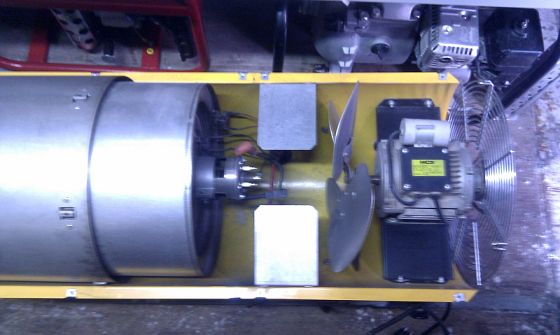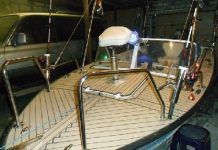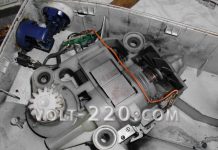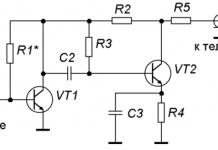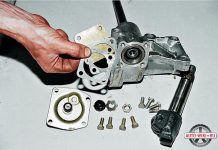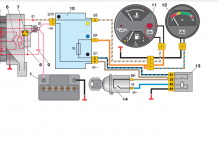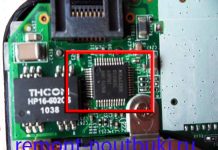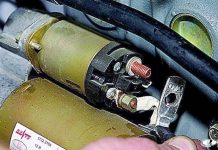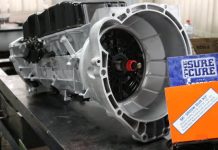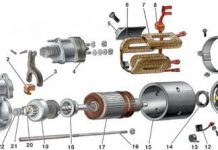In detail: do-it-yourself diesel thermal cannon repair from a real master for the site my.housecope.com.
Heat guns are designed for continuous operation for a long time, and, like any equipment for continuous operation, they require periodic maintenance and repair. Heat gun maintenance consists in cleaning them and adjusting parameters such as: air flap clearance, compressor pressure, fuel pump pressure, etc. A heat gun repair is to find faulty parts and replace them.
Consider, for example, a Master BV 110 E heat gun. This is an indirectly heated diesel heat gun with electronic flame control.
The basic structure of such a gun is quite simple. The fuel is supplied by the fuel pump to the injector, where it is sprayed into the combustion chamber. In front of the nozzle, there are two electrodes that ignite the fuel. Also, air is blown into the combustion chamber by a fan. If the gun is indirectly heated, then the combustion chamber has two independent circuits, which makes it possible not to mix heated air with combustion products.
The maintenance process of a diesel heat gun consists in cleaning the following components: fan, ignition electrodes, nozzle and diffuser and combustion chamber.
Let's transgress. Remove the cover from the back and front.
Now we have access to the fan and the rear grille. To get to the injector, we disconnect from the combustion chamber: 2 wires of the ignition electrodes (red), a photo sensor (black), a fuel line (copper tube), as well as 2 wires each from the thermal sensors on the combustion chamber. All wires are disconnected by hand, only a key is needed for the fuel line.
| Video (click to play). |
To remove the combustion chamber, you need to unscrew one screw in the lower front of the housing.
To remove the unit with the nozzle and diffuser, you need to unscrew the two nuts on the rear end of the combustion chamber.
Now you need to thoroughly clean the nozzle, electrode and diffuser.
The combustion chamber is non-separable, but it can also be well cleaned of soot using a compressor.
After cleaning the heat gun, it is also necessary to set the required gaps between the electrodes, as well as the gap of the air damper into the combustion chamber.
Everything. This completes the service.
When repairing heat guns of this type, the main task is to find faulty parts. What can be both an easy task, if the breakdown is of a mechanical nature, or rather nontrivial, for example, in case of malfunctions of the flame keeping system, you have to check all the elements of the control system step by step.
After identifying the faulty part, it remains to find it in the detailing and order.
Finally, a link to the channel with small videos about the repair of Master heat guns.
And this is not surprising: after all, with the help of these heating units, it is possible to heat a room in a fairly short period, even large ones.
This is achieved due to the fact that the principle of operation of heat guns is as follows: heat is generated in the structural unit of the unit, and then, with the help of a powerful air flow, is supplied to a given place.
The uniqueness of the principle of operation of heat guns has led to the fact that recently equipment of this type has begun to be used quite often to achieve various industrial and domestic purposes. In other words, heat guns have gained unusual popularity due to their technical characteristics and ease of use.
But everyone probably knows that no matter how high-quality and efficient the equipment is, sooner or later failures occur in its functioning and malfunctions may occur. In such situations, the owners of heat guns, as a rule, contact specialized service centers.
However, there is another approach for identifying and eliminating defects in the operation of heating units of this type, which lies in the fact that the repair of a heat gun can be done by hand. Therefore, this article will be devoted to how to correctly find out and troubleshoot the operation of gas and diesel heat guns.
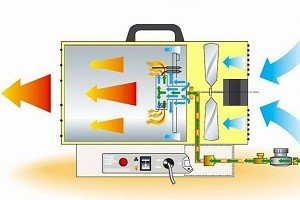

- blower fan;
- piezoelectric element for gas ignition;
- control and protective units;
- fuel supply device.
Therefore, below we will indicate what malfunctions may arise in the operation of gas heating units, as well as how they can be eliminated with our own hands:
- Gas does not ignite. In this situation, as a rule, the piezoelectric element has failed. It is recommended to clean the igniter and set the gap between the electrodes. And if the problem is not solved, then it is necessary to completely replace the piezoelectric element.
- Gas is connected to the heat gun, but does not enter the combustion chamber. The cause of this malfunction is a clogged burner. It is recommended to clean this element with a compressor, in other words, you need to blow through the burner with a powerful jet of air.
- There is an unpleasant smell of carbon monoxide. As a rule, the appearance of this malfunction is due to the fact that a leak has appeared in the gas hoses. Therefore, in order to eliminate this defect, it is necessary to tighten the fastening clamps or cut off the ends of the hose. If this procedure does not help, then these line hoses must be replaced.
You can read an overview of suitable heat guns for a garage in this article.


- Fuel is supplied to the combustion chamber intermittently. The appearance of this defect is primarily associated with contamination of the fuel tank and its supply system. In this case, it is recommended to drain the fuel from the tank and rinse thoroughly. Then it is necessary to purge the entire fuel system.
- The fuel mixture is non-flammable. This failure is primarily associated with spark plug defects. To eliminate the malfunction, it is necessary to remove the plug, clean it mechanically, and also adjust the gap between the electrodes of this ignition element.
- The heat gun began to work intermittently. This type of malfunction is associated with a clogged air filter. In such a situation, a new filter must be installed.
- The heat exchanger does not heat up well due to a small flame in the combustion chamber. This defect is due to the fact that the nozzle is heavily soiled. In this case, cleaning occurs in a non-mechanical way. In other words, the nozzle is thoroughly flushed and then purged with a compressor.
- The heat gun overheats during operation. This malfunction occurred because the thermostat was out of order. To eliminate the defect, you need to clean all the elements of the thermostat or, if necessary, replace them with new ones.
In conclusion, we would like to wish you that your heat gun never breaks down, and if, nevertheless, such a nuisance has happened, then following our recommendations, you can easily identify all the defects and feel free to carry out repairs yourself.
Watch a video in which an experienced user clearly demonstrates the process of repairing a gas heat gun with his own hands:
DESIGN PRESTIGE LLC has a year of foundation 1999. Employees of the company have a Moscow residence permit and are of Slavic origin, payment is made in any convenient way, if necessary, work is provided on credit.
These products are used to heat private garages, service stations, utility and storage rooms, construction sites - where people do not live. In the event of a breakdown of diesel heat guns, it is quite possible to independently diagnose, establish the cause of the breakdown and repair the unit.
Such guns are often called fan heaters due to the similarity of the principle of operation, but they have certain differences. They work in the same way as other similar products: air flows around the combustion chamber with a fan and heats the room.
The principle of operation of the heat gun
The design of modern guns includes a special sensor that turns off the device when the set temperature is reached, thus achieving significant fuel savings. Garage craftsmen make guns that can run on different grades of used oil.
Factory or home-made, heaters have several very vulnerabilitiesso they need frequent repairs. This is cleaning nozzles and filters, replacing the fan and much more. To find out all the vulnerabilities, you need to study the design of such guns.
Important advice! After using the gun and setting it for long-term storage, the remaining fuel must be drained, and the tank must be thoroughly rinsed from the remaining diesel fuel. It is unsafe for the product to use fuels that have been stored for a long time.
Products with indirect heating method premises have chimneys through which all combustion products are removed, so in practice they can be used to heat living quarters. They are much safer, but they use oxygen for combustion, so ventilation or periodic ventilation is needed. Their power is lower, because losses occur through the exhaust system.
Diesel heat gun device
The product direct heating all combustion products remain in the room, so they cannot be used where people live permanently. They are used to heat construction sites and warehouses where there is a natural flow of air, because lack of ventilation can lead to carbon monoxide poisoning.
All products are equipped with powerful body made of metal: it excludes the ingress of foreign objects that can cause damage or become a source of fire. Necessarily installed fuse, which turns off the device when the case is very hot.
For circulation, use a compressor or a small pump, for pumping into the room - fan, which experts consider one of the vulnerabilities of these products. A burner and a fuel supply pipeline are located inside the housing.
The main elements of a diesel heat gun:
- there is an exhaust pipe for removing smoke;
- a fuel tank located at the bottom of the product;
- pump or compressor driven by an electric motor.
Repairing a diesel installation can cost a user a lot, because only diagnostics cost from 1000 rubles, depending on the model. Many car enthusiasts cope on their own, diagnosing empirically or following the standard path from a simple failure to a complex case. Sometimes there are options when the product does not work normally just because it jumped off valve spring, it remains permanently closed - there is no air flow into the combustion chamber. As a result, the cannon also stalls.
This breakdown is determined simply - there is no movement of warm air. We begin a visual inspection of the motor: first, we will clean the terminals, then we will ring the motor winding using an analog tester. We also check the insulation of the winding. In some cases, in order not to waste time, it is easier to install new enginethan testing the old one.
This is a very important detail: the functionality of the entire product depends on its high-quality work, because it sprays diesel fuel in the combustion chamber, thereby ensuring complete combustion of the fuel. Injectors rarely fail, and these spare parts for diesel devices can be purchased at any heat gun store.
Sometimes the diesel cannon stops working because there is no fuel supply to the injectors due to a clogged filter. We open the case of the device, unscrew the plug, take out the filter element and rinse it in a clean kerosene... Then it can be blown off with compressed air and installed in place.
According to the statistics of all malfunctions, the fan often fails - it is he who undergoes intensive wear during the operation of the product. Reflow occurs insulation wiring or its burnout: in this case, it is not difficult to change the wires, but if mechanical stress or extreme wear is detected, then in this case the fan must be replaced.
Mostly heat guns are equipped with fans low power, therefore, it is not difficult to find a replacement for them - it is enough to visit a specialized store and choose a product based on the performance of your device.
The user must remember that all encountered failures require an individual approach, but there is nothing super complicated in the details of a diesel gun. Therefore, repairing a heat gun with your own hands is subject to any home craftsman - you just need to have the desire and a little free time.
To ensure fire safety measures, a container with a fuel supply for the product must be located at a distance of 8 meters from heating devices or any sources of open flame.
Remember! Instead of diesel fuel, you cannot use gasoline of any brand: the likelihood of an explosion increases many times over, because it is more volatile.
Safety measures when using guns are quite simple - you must immediately leave the room if you feel:
- sudden and severe dryness in the mouth;
- pain in the throat, nose, or eye area;
- sudden attacks of headache;
- desires of nausea.
Many people react very painfully to carbon monoxide indoors: for example, people with lung diseases or cardiac patients with anemia, pregnant women. They are contraindicated to be located where a diesel heat gun with direct heating is used.

And this is not surprising: after all, with the help of these heating units, you can heat a room in a fairly short period, even large ones.
This is achieved due to the fact that the principle of operation of heat guns is as follows: heat is generated in the structural unit of the unit, and then, with the help of a powerful air flow, is supplied to a given place.
The uniqueness of the principle of operation of heat guns has led to the fact that recently equipment of this type has begun to be used quite often to achieve various industrial and domestic purposes. In other words, heat guns have gained extraordinary popularity due to their technical characteristics and ease of use.
But everyone probably knows that no matter how high-quality and efficient the equipment is, sooner or later failures occur in its functioning and malfunctions may occur. In such situations, the owners of heat guns, as a rule, contact specialized service centers.
However, there is another approach for identifying and eliminating defects in the operation of heating units of this type, which lies in the fact that the repair of a heat gun can be done by hand. Therefore, this article will be devoted to how to correctly find out and troubleshoot the operation of gas and diesel heat guns.

- blower fan;
- piezoelectric element for gas ignition;
- control and protective units;
- fuel supply device.
Therefore, below we will indicate what malfunctions may arise in the operation of gas heating units, as well as how they can be eliminated with our own hands:
- Gas does not ignite. In this situation, as a rule, the piezoelectric element has failed. It is recommended to clean the igniter and set the gap between the electrodes. And if the problem is not solved, then it is necessary to completely replace the piezoelectric element.
- Gas is connected to the heat gun, but does not enter the combustion chamber. The cause of this fault is a clogged burner. It is recommended to clean this element with a compressor, in other words, you need to blow through the burner with a powerful jet of air.
- There is an unpleasant smell of carbon monoxide. As a rule, the appearance of this malfunction is due to the fact that a leak has appeared in the gas hoses. Therefore, in order to eliminate this defect, it is necessary to tighten the fastening clamps or cut off the ends of the hose. If this procedure does not help, then these line hoses must be replaced.
You can read an overview of suitable heat guns for a garage in this article.

- Fuel is supplied to the combustion chamber intermittently. The appearance of this defect is primarily associated with contamination of the fuel tank and its supply system. In this case, it is recommended to drain the fuel from the tank and rinse thoroughly. Then it is necessary to purge the entire fuel system.
- The fuel mixture is non-flammable. This failure is primarily associated with spark plug defects. To eliminate the malfunction, it is necessary to remove the plug, clean it mechanically, and also adjust the gap between the electrodes of this ignition element.
- The heat gun began to work intermittently. This type of malfunction is associated with a clogged air filter. In such a situation, a new filter must be installed.
- The heat exchanger does not heat up well due to a small flame in the combustion chamber. This defect is due to the fact that the nozzle is heavily soiled. In this case, cleaning occurs in a non-mechanical way. In other words, the nozzle is thoroughly flushed and then purged with a compressor.
- The heat gun overheats during operation. This malfunction occurred because the thermostat was out of order. To eliminate the defect, you need to clean all the elements of the thermostat or, if necessary, replace them with new ones.
In conclusion, we would like to wish you that your heat gun never breaks down, and if, nevertheless, such a nuisance has happened, then following our recommendations, you can easily identify all the defects and feel free to carry out repairs yourself.
Watch a video in which an experienced user clearly demonstrates the process of repairing a gas heat gun with his own hands:
Heat guns are one of the most effective types of equipment for space heating.
And this is not surprising: after all, with the help of these heating units, you can heat a room in a fairly short period, even large ones.
This is achieved due to the fact that the principle of operation of heat guns is as follows: heat is generated in the structural unit of the unit, and then, with the help of a powerful air flow, is supplied to a given place.
The uniqueness of the principle of operation of heat guns has led to the fact that recently equipment of this type has begun to be used quite often to achieve various industrial and domestic purposes. In other words, heat guns have gained extraordinary popularity due to their technical characteristics and ease of use.
But everyone probably knows that no matter how high-quality and efficient the equipment is, sooner or later failures occur in its functioning and malfunctions may occur. In such situations, the owners of heat guns, as a rule, contact specialized service centers.
However, there is another approach for identifying and eliminating defects in the operation of heating units of this type, which lies in the fact that the repair of a heat gun can be done by hand. Therefore, this article will be devoted to how to correctly find out and troubleshoot the operation of gas and diesel heat guns.
Most often, the following structural elements can fail in a gas heat gun:
- blower fan;
- piezoelectric element for gas ignition;
- control and protective units;
- fuel supply device.
Therefore, below we will indicate what malfunctions may arise in the operation of gas heating units, as well as how they can be eliminated with our own hands:
- Gas does not ignite. In this situation, as a rule, the piezoelectric element has failed. It is recommended to clean the igniter and set the gap between the electrodes. And if the problem is not solved, then it is necessary to completely replace the piezoelectric element.
- Gas is connected to the heat gun, but does not enter the combustion chamber. The cause of this malfunction is a clogged burner. It is recommended to clean this element with a compressor, in other words, you need to blow through the burner with a powerful jet of air.
- There is an unpleasant smell of carbon monoxide. As a rule, the appearance of this malfunction is due to the fact that a leak has appeared in the gas hoses. Therefore, in order to eliminate this defect, it is necessary to tighten the fastening clamps or cut off the ends of the hose. If this procedure does not help, then these line hoses must be replaced.
Expert advice: you can check the suspected leaks with a soapy solution. If the gas leaks out, then in this place it will inflate soap bubbles.
Diesel heat gun malfunctions consist of the following important points:
- Fuel is supplied to the combustion chamber intermittently. The appearance of this defect is primarily associated with contamination of the fuel tank and its supply system. In this case, it is recommended to drain the fuel from the tank and rinse thoroughly. Then it is necessary to purge the entire fuel system.
- The fuel mixture is non-flammable. This failure is primarily associated with spark plug defects. To eliminate the malfunction, it is necessary to remove the plug, clean it mechanically, and also adjust the gap between the electrodes of this ignition element.
- The heat gun began to work intermittently. This type of malfunction is associated with a clogged air filter. In such a situation, a new filter must be installed.
- The heat exchanger does not heat up well due to a small flame in the combustion chamber. This defect is due to the fact that the nozzle is heavily soiled. In this case, cleaning occurs in a non-mechanical way. In other words, the nozzle is thoroughly flushed and then purged with a compressor.
- The heat gun overheats during operation. This malfunction occurred because the thermostat was out of order. To eliminate the defect, you need to clean all the elements of the thermostat or, if necessary, replace them with new ones.
In conclusion, we would like to wish you that your heat gun never breaks down, and if, nevertheless, such a nuisance has happened, then following our recommendations, you can easily identify all the defects and feel free to carry out repairs yourself.
Watch a video in which an experienced user clearly demonstrates the process of repairing a gas heat gun with his own hands:
To heat various rooms and maintain the required temperature, we are faced with the question: What kind of fan heater should be purchased?
- And we need to approach such a question rationally and economically.
Economical - taking into account the consumption of electrical energy. Reasonable - from the point of view of choosing this product for a fan heater.

Currently, we are simply at a loss in front of such a choice, since there is a wide range of products on sale:
- various designs;
- various types of modifications
and the power of fan heaters.
So what kind of fan heater do we need to buy ?:
- IRIT IR - 604, power 1000-2000 W;
- Delta B - 801 - 1, 2000 W;
- WATT WCH - 1500, 1500 W;
- First TZ - FH3, 2000W
I would believe that the following conditions should be taken into account when purchasing:
- area of the room;
- time of heating the room with subsequent maintenance of the required air temperature;
- type of premises.
- premises, when purchasing, should not be neglected in the advisory approach to such a solution to the issue. This implies the advice of the seller-consultant himself in choosing a heater.
To successfully carry out repairs to troubleshoot fan heaters, you need to know - how these heaters are arranged.
Both the electrical circuit itself and its individual elements included in the circuit do not require great knowledge of electrical engineering in their understanding.
What is the point here? - The bottom line is the very value of the resistance of the fan heater.
From the section on electrical engineering, we know that the lower the resistance both for the electrical circuit as a whole, and in particular for the heaters, the greater the current value will be accordingly.
To put it more simply, the less the resistance of any heating element, the heating coil of the fan heater, the greater the degree of heating.
Of course, fan heaters have their own permissible resistance value. Consider the electrical diagram of fan heaters intended for connection to a two-wire single-phase network.
As a rule, for safe use of fan heaters, their grounding must also be taken into account, that is, the combination of a grounding device with the metal casing of the fan heater.
This electrical diagram Fig. 1 of the fan heater consists of:
- switch SA1;
- two thermostats SK1, SK2;
- electric motor M1;
- heater EK1.
The electric motor in the electric circuit is the electric fan, which creates air injection to the heater.
The EK1 heater can be an ordinary electric heating coil made of nichrome.
The SK2 thermostat provides the preset heating mode of the EK1 heater for this circuit, from 5 to 40 degrees Celsius. Timely shutdown is also ensured upon reaching the set mode of the heater heating temperature.
The switching on and off of the heater here occurs due to the heating and cooling of the bimetallic plate of the thermostat, which is the switch contacts.
The diagram shows the connection of the ground wire to the metal casing of the fan heater. The connection of the fan motor and the EK1 heater is parallel in the electrical circuit.
SA1, SK1, SK2, - have a serial connection in the circuit. The electrical circuit for this circuit is closed at the electric motor and heater.
Possible reasons for a fan heater malfunction may be:
- oxidation or burning of contacts SA1, SK1, SK2;
- burnout of the copper wire in the stator winding of the electric motor;
- burnout of the heating coil of the heater;
- burnout of the wire in connection with the plug;
- burnout of the wire in the contact connection with the heater;
- mechanical damage to the wire in the network cable
Consider the following diagram, a diagram of a three-phase fan heater TVK 612; 912.
three-phase fan heater TVK 612; 912
The three-phase fan heater consists of three heaters EK1, EK2, EK3. Two phases L2, L3 are connected through a contactor to heaters EK2, EK3.
Phase L1 is connected to switch SA1 through disk thermostat SK1.
From the switch, as seen in the diagram, there are two taps from phase L1. One branch of the phase current L1 through the switch SA1 goes to the contact connection with the electric motor.
Another branch of the phase current L1 is connected to the contactor KM1, then the phase L1 is connected to the first heater EK1.
The neutral neutral wire also has two branches. One branch of the neutral wire is connected to the electric motor, that is, the electric motor is connected to an external voltage source 220V, phase L1 and neutral.
Another neutral branch is connected via a contactor to the switch. In other words, by closing the switch contacts, the operating mode of the heaters can be controlled.
The electric motor, as shown in the diagram, is electrically connected to the body by ground, just like the body of the fan heater itself, namely, the body of the electric motor and the body of the fan heater are connected to ground.
I believe that it is not so important here to learn how to outline all the available connections for a given electrical circuit. It is enough just to carefully trace its individual sections.
The principle of operation of a household fan heater is the same as that of a heat gun that heats, for example, a warehouse or some other room.
To diagnose the fan heater circuit for individual sections of the electrical circuit, individual elements in the electrical circuit, it is necessary to disassemble this heating appliance.
To disassemble the fan heat, you need a screwdriver for the corresponding screw head. With such a diagnosis, you will need:
- probe or indicator screwdriver with batteries;
- device Multimeter or Ohmmeter.
Diagnostics both for individual sections of the electrical circuit and for individual elements included in the electrical circuit of the fan heater can be carried out with a probe. Currently, there is a wide range of different probes on sale, for example, in my practice I use the Navigator NTP-E probe, since I also need it for work on the electrical part.
The ohmmeter device is necessary after all the electrical connections have been made, because before connecting the fan heater to the outlet, you need to check the heating device for resistance.
After removing the cover, we turn our attention to the fuses, which are in the electrical circuit. Fan heaters usually have a blown fuse.
In the photograph, we can see the fuses with the designation of the pointing arrows:
- blue arrow - fuse;
- yellow arrow - overheat fuse.
This photo shows a fuse with a rated heating temperature of 121 degrees Celsius.
The heating element is the heat of the fan, as can be clearly seen in the photograph, it is made in the form of a spiral, nichrome is used as a material.
When replacing the heating element, the following is taken into account:
- resistance of heating elements;
- power of heating element.
Diagnostics for the electric motor circuit of the fan heat is carried out taking into account the resistance measurement:
- stator windings;
- rotor windings
and detailed information on diagnostics of an electric motor can be found in this website.


And this is not surprising: after all, with the help of these heating units, it is possible to heat a room in a fairly short period, even large ones.
This is achieved due to the fact that the principle of operation of heat guns is as follows: heat is generated in the structural unit of the unit, and then, with the help of a powerful air flow, is supplied to a given place.
The uniqueness of the principle of operation of heat guns has led to the fact that recently equipment of this type has begun to be used quite often to achieve various industrial and domestic purposes. In other words, heat guns have gained extraordinary popularity due to their technical characteristics and ease of use.
But everyone probably knows that no matter how high-quality and efficient the equipment is, sooner or later failures occur in its functioning and malfunctions may occur. In such situations, the owners of heat guns, as a rule, contact specialized service centers.
However, there is another approach for identifying and eliminating defects in the operation of heating units of this type, which lies in the fact that the repair of a heat gun can be done by hand. Therefore, this article will be devoted to how to correctly find out and troubleshoot the operation of gas and diesel heat guns.


- blower fan;
- piezoelectric element for gas ignition;
- control and protective units;
- fuel supply device.
Therefore, below we will indicate what malfunctions may arise in the operation of gas heating units, as well as how they can be eliminated with our own hands:
- Gas does not ignite. In this situation, as a rule, the piezoelectric element has failed. It is recommended to clean the igniter and set the gap between the electrodes. And if the problem is not solved, then it is necessary to completely replace the piezoelectric element.
- Gas is connected to the heat gun, but does not enter the combustion chamber. The cause of this malfunction is a clogged burner. It is recommended to clean this element with a compressor, in other words, you need to blow through the burner with a powerful jet of air.
- There is an unpleasant smell of carbon monoxide. As a rule, the appearance of this malfunction is due to the fact that a leak has appeared in the gas hoses. Therefore, in order to eliminate this defect, it is necessary to tighten the fastening clamps or cut off the ends of the hose. If this procedure does not help, then these line hoses must be replaced.
You can read an overview of suitable heat guns for a garage in this article.


- Fuel is supplied to the combustion chamber intermittently. The appearance of this defect is primarily associated with contamination of the fuel tank and its supply system. In this case, it is recommended to drain the fuel from the tank and rinse thoroughly. Then it is necessary to purge the entire fuel system.
- The fuel mixture is non-flammable. This failure is primarily associated with spark plug defects. To eliminate the malfunction, it is necessary to remove the plug, clean it mechanically, and also adjust the gap between the electrodes of this ignition element.
- The heat gun began to work intermittently. This type of malfunction is associated with a clogged air filter. In such a situation, a new filter must be installed.
- The heat exchanger does not heat up well due to a small flame in the combustion chamber. This defect is due to the fact that the nozzle is heavily soiled. In this case, cleaning occurs in a non-mechanical way.In other words, the nozzle is thoroughly flushed and then purged with a compressor.
- The heat gun overheats during operation. This malfunction occurred because the thermostat was out of order. To eliminate the defect, you need to clean all the elements of the thermostat or, if necessary, replace them with new ones.
In conclusion, we would like to wish you that your heat gun never breaks down, and if, nevertheless, such a nuisance has happened, then following our recommendations, you can easily identify all the defects and feel free to carry out repairs yourself.
| Video (click to play). |
Watch a video in which an experienced user clearly demonstrates the process of repairing a gas heat gun with his own hands:

